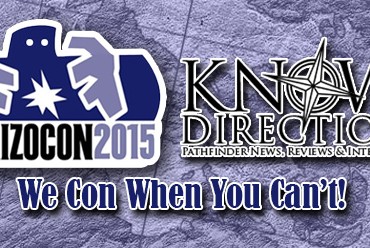TPKs, the Total Party Kill. It goes by a number of other names, like total party wipe, total player kill, and so on. Its a topic that every RPG player is introduced to eventually. That dreaded situation when all the PCs are dead and there’s no one left to continue the adventure.
Some GMs see TPKs and player kills in general as an achievement. I’ve even heard some GMs keeping a tally on their GM screens like a badge of honor. While I can respect each individual GM’s right to run their own game however they see fit, I disagree with the notion that PC death in general is a good thing. Even more so in the case of TPKs. Because TPKs mean the end of the story.
As a GM, whether you run a homebrew or run published adventures, you’re a storyteller, an author of sorts. You guide the readers through the narrative, the adventure. But unlike most traditional storytellers you don’t get to control the actions of the protagonists. At least not directly. Furthermore, the readers in this case ARE the protagonists. So what happens when all your protagonists are dead and gone? The readers lose interest in the story.
Generally speaking, when a player’s character dies he loses his one real way of influencing the story. He has no way of participating until his character is brought back to life or he rolls up a new character. And when your entire party of characters die, there are far fewer options for bringing them all back into the story. Death is a complicated and potentially troublesome issue for any gaming group as Alex talks about in his latest Death & Taxes article. TPKs can make things even messier. For me the ideal is to threaten my PCs with death and destruction without actually pulling the trigger. So, it’s best to avoid the TPK situations entirely.
Fortunately, TPKs are rarely sudden and inevitable occurrences. There are a number of factors that can lead up to a TPK and spotting them can allow you to react before the worst occurs.
The Players Want to Fight But Shouldn’t
I’ve seen this a couple of times, mostly in homebrews. The narrative calls for the PCs to flee or surrender and the players react as though it were a normal combat and slog it out. Also lumped into this category is when the players encounter a thing with a CR way above their level but want to fight it anyways.
To the first situation, I would suspect that it’s poor adventure design that leads to PCs wiping. Ideally, an adventure should never call for the capture, surrender, or anything so non-heroic as the only option for PCs. Remember that players are in this to tell awesome stories about their characters. And shoehorning them into some contrived situation smacks of competitive storytelling, not collaborative.
The second situation can be trickier. It can be hard GMing for a group that wants to hack, slash, and burn their way through every encounter, whether it was written as a combat or not. There are ways, through narrative description, or subtle clues to let your PCs know that a particular baddie is too strong for them. “Oh, yes. The Tyrant of Black Skull has slain every hero who has confronted him!” or “The Red Wyrm, Emberflynne, torched the entire city in a single night!”
But often these tales will only spur your PCs on. You could, out-of-character, directly tell your players that the CR is too high. But that can ruin the mood of a game and break immersion. One option, when the confrontation occurs is to have these powerful adversaries make light of the PCs’ threat. If these encounters are truly beyond your PCs then their opponents can afford to take sub-optimal actions. The Tyrant of Black Skull sunders the Paladin’s sword or Greater Dispells all the Wizard’s buffs. Emberflynne wing buffets the entire party off of her mountain. If the PCs encounter with the legendary bad guy goes embarrassingly poorly, they aren’t likely to want to tackle him again until they get more powerful.
Dice Gods
Most RPGs are dice based games. And that can mean that Lady Luck is a prominent participant. A string of poor dice on the part of my players and equally good rolls on my part has nearly spelt the end of many adventures. There’s really nothing you can do to prepare for this scenario. But this is one of the reasons that I roll exclusively behind the screen. So that I can fudge dice in my players’ favor when I need to.
It’s Too Powerful!
Occasionally, even in the best balanced adventures, the PCs will encounter something that they SHOULD be able to defeat but somehow can’t. This could be as simple as a gargoyle having DR 10/magic and the PCs not having a magic weapon. Or maybe the three lower CR beasties interact with the environment in such a way that raises their effective CR. If they PCs don’t run you’ll need to figure out how to manage the danger for your party so they don’t get completely overrun. Dice fudging can also work here. But I caution against its overuse because your PCs will eventually catch on. Another tactic is running opponents sub-optimally. Having them waste their action economy on non-lethal but flavorful actions. A Goblin stopping to scratch his butt or an Orc reveling in just breaking down something adds flavor to an encounter without taking more hp away from your players.
Overall, how you run your game is up to you. If you want to wear your triple platinum TPK badge prominently on your lapel, far be it for me to stop you. But if you want to figure out how to threaten your players without actually killing them, I’ll always be here to help.
Got a story? Want to tell me about how you mercilessly TPK’d your party? Let us know about it in the comments section below!






I had the party face against an advanced, giant T-rex. A CR+4 encounter at the time. It was fairly “manageable” for them by playing on the low intelligence of the T-rex. The bite, grab, and next turn swallow whole thing works really well for an encounter like that. Plus, it’s super iconic for the players. Since they get swallowed, they actually take much less damage than the bite, especially since T-rex adds double STR to damage. A bite would’ve 2-shot anyone in the group, but being swallowed gave them enough time to live and get cut out before the rex would attack someone else.
Plus, who doesn’t want the loot of previously eaten adventurers?